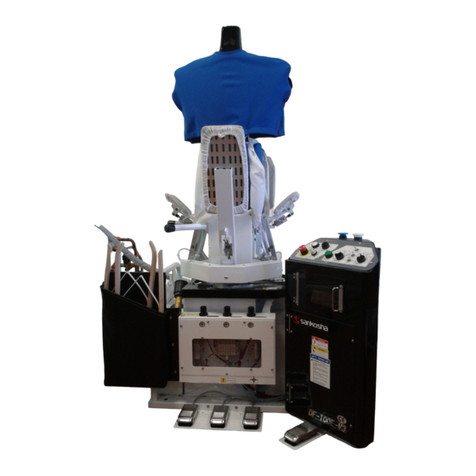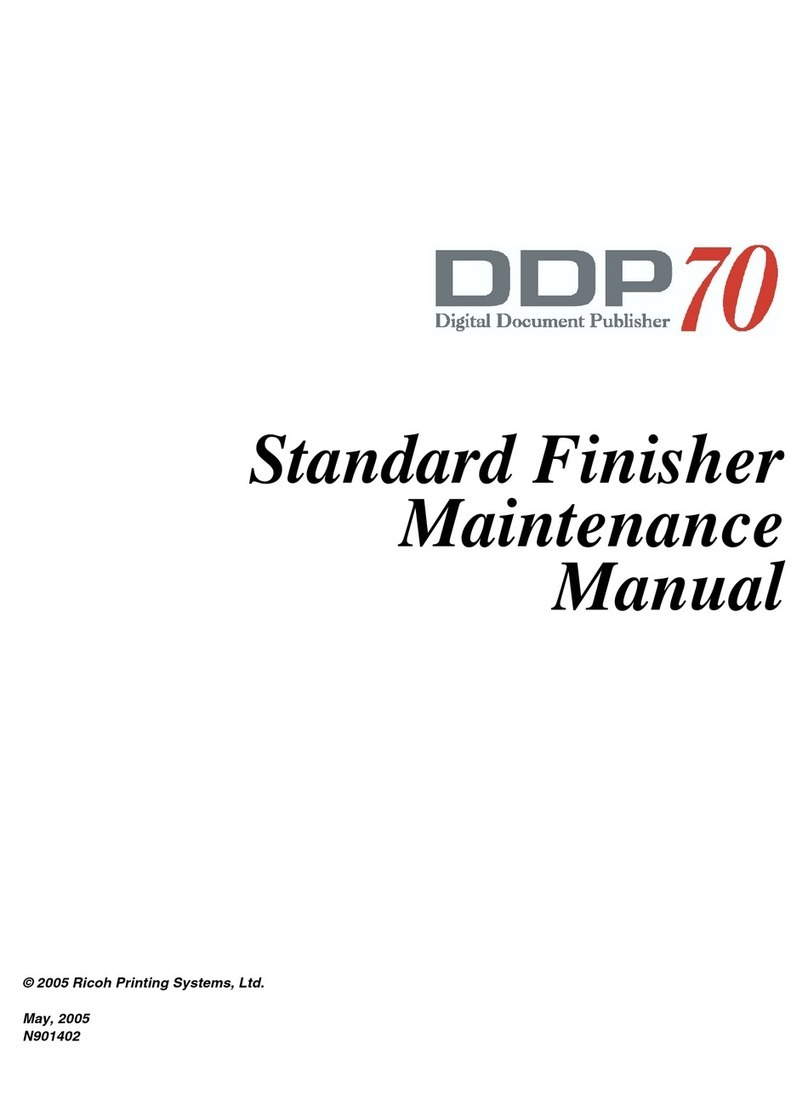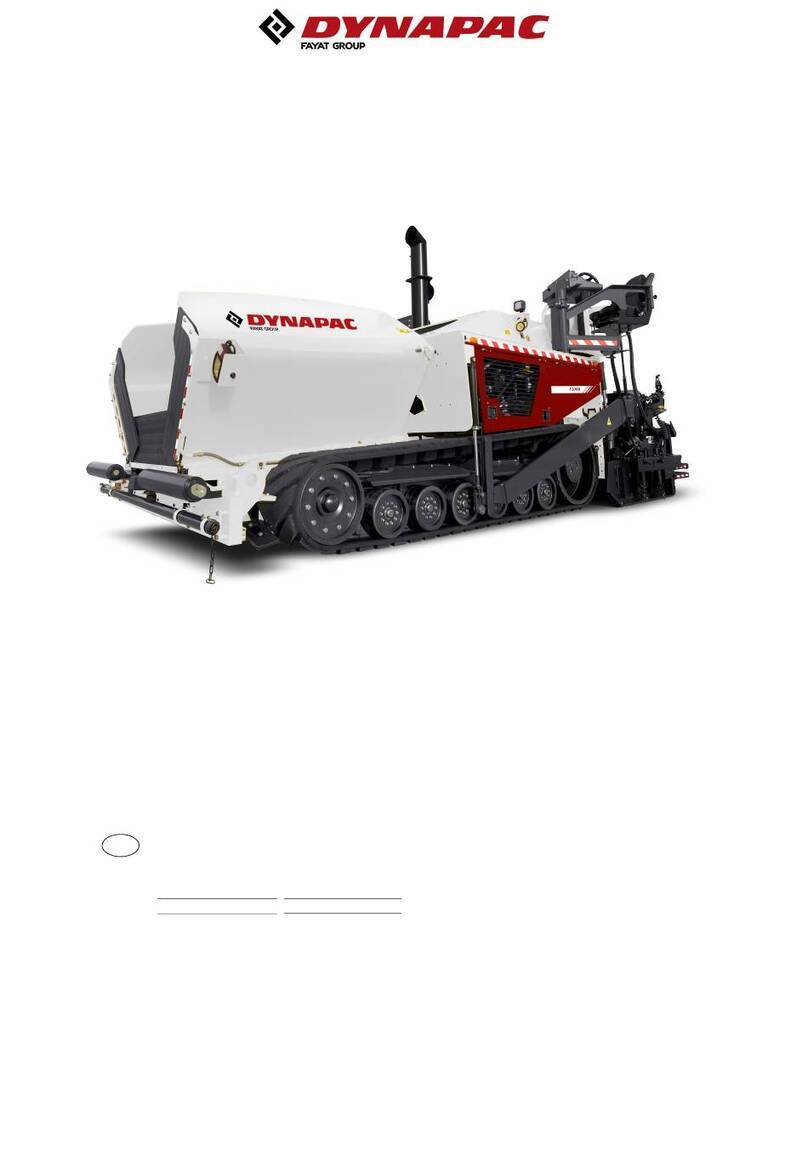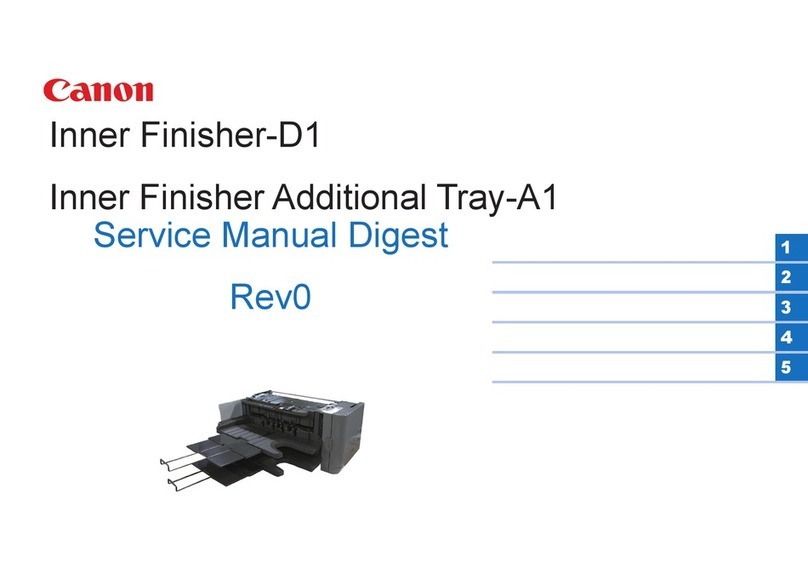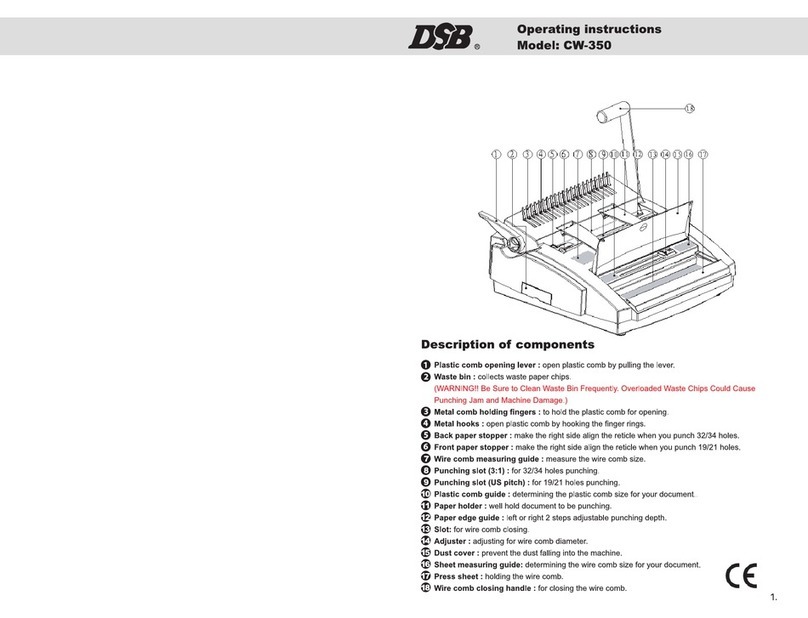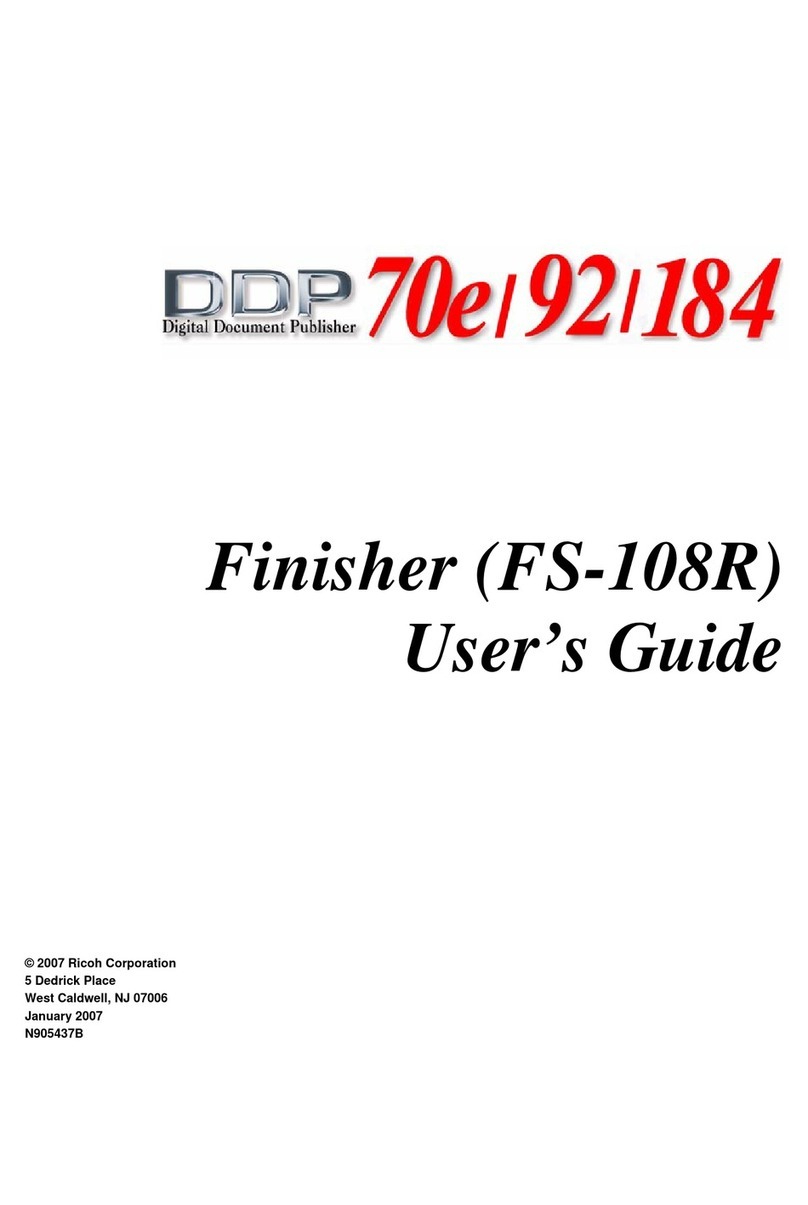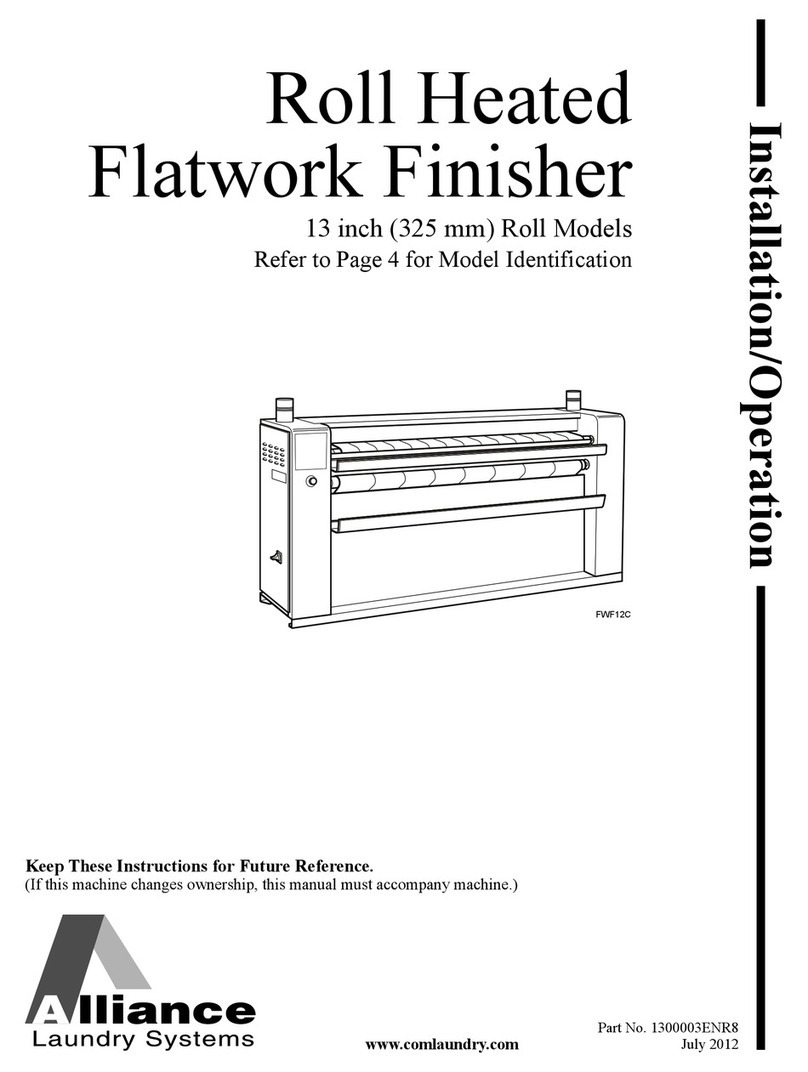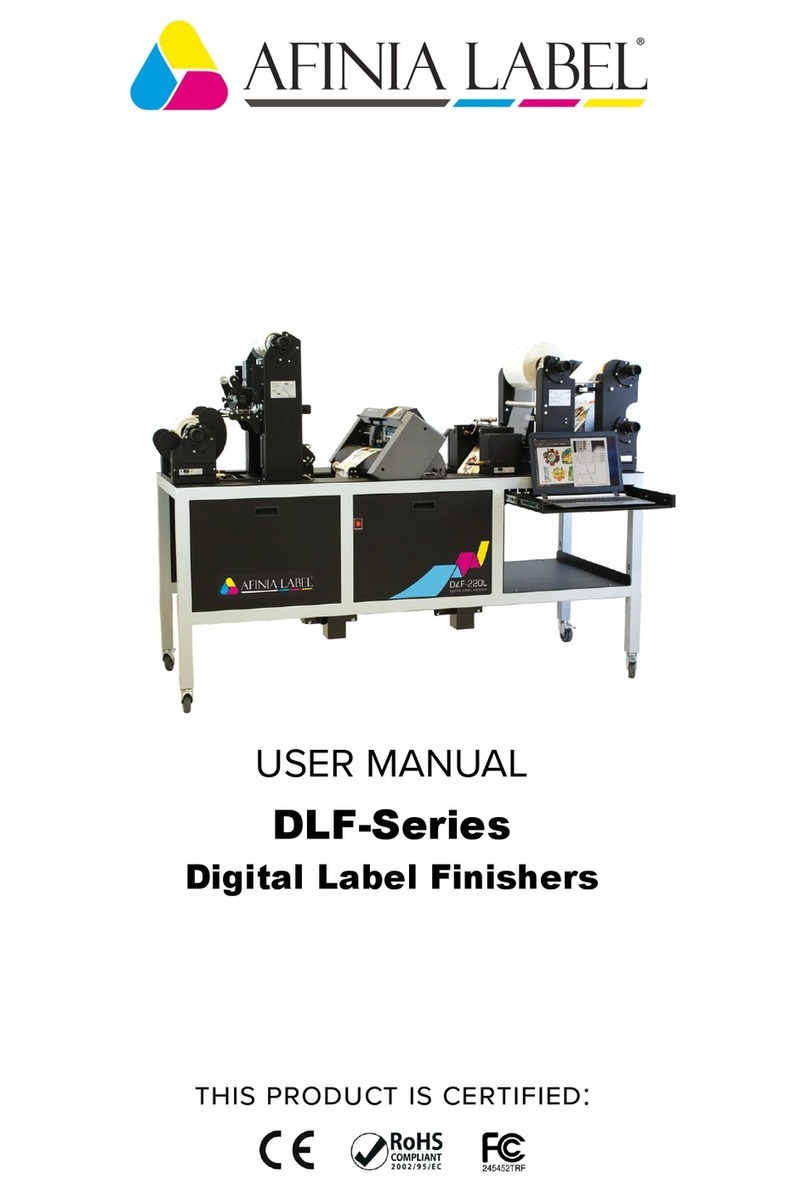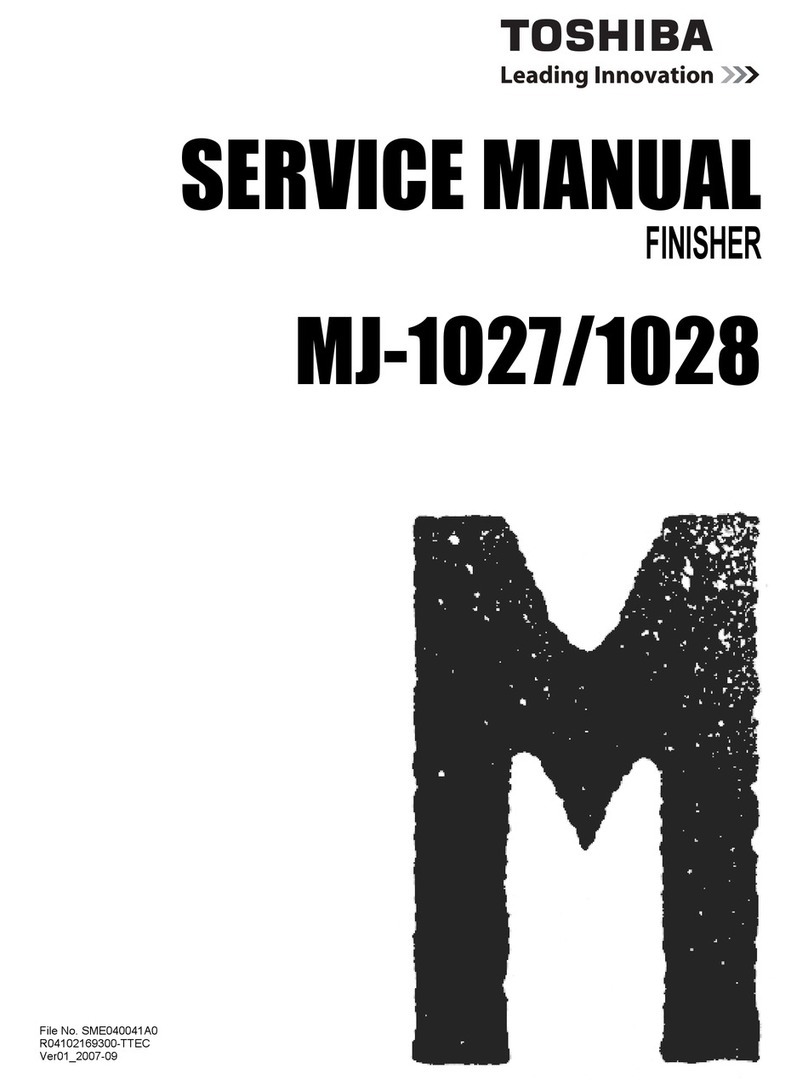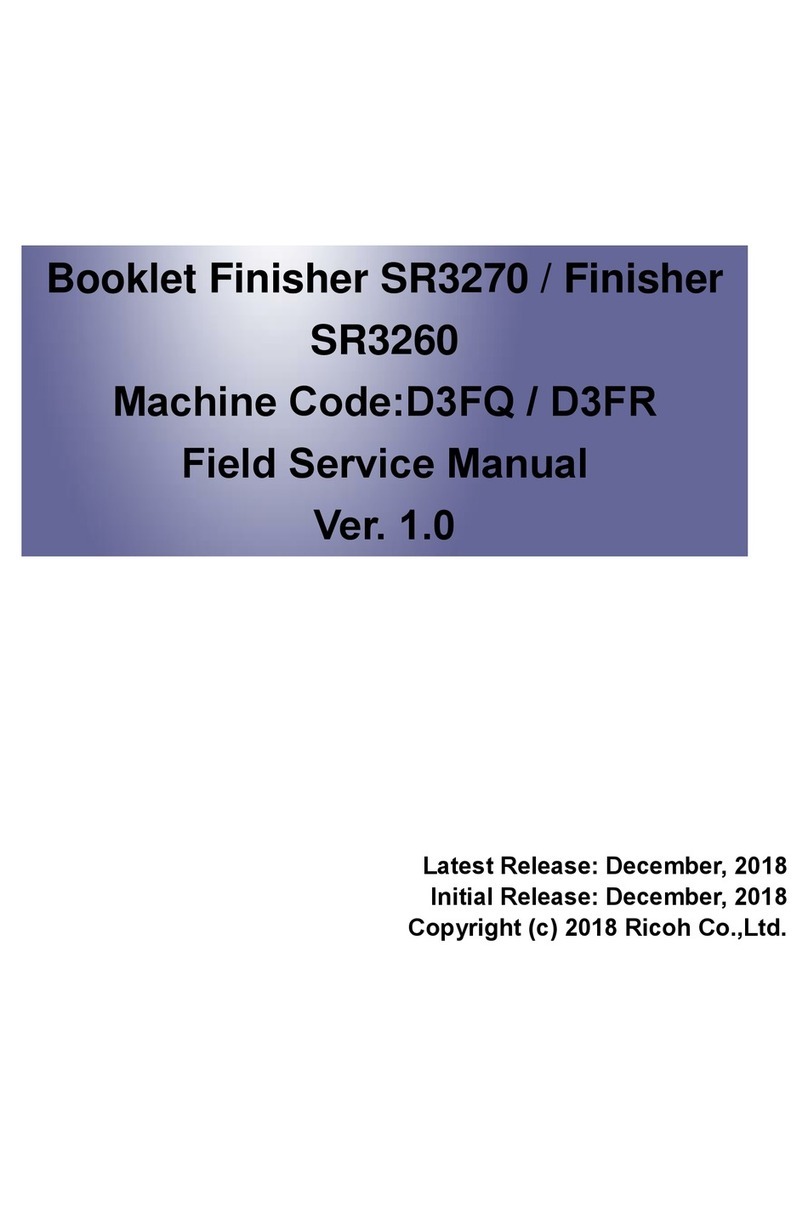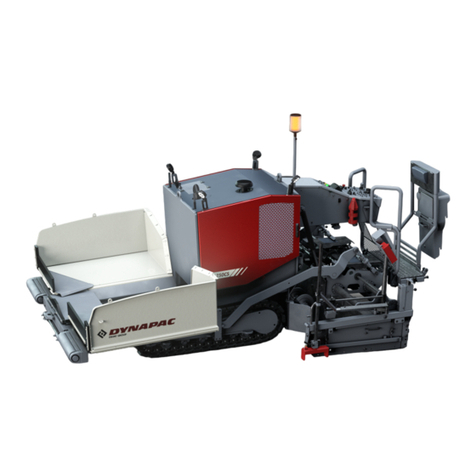
CONTENTS
1 Finisher/Saddle Unit............................ 3-1
1.1 Externals and Controls ............... 3-1
1.1.1 Removing the Delivery Tray 3-1
1.1.2 Removing the Front Cover ... 3-2
1.1.3 Removing the Rear Cover .... 3-3
1.1.4 Removing the Upper Cover . 3-3
1.1.5 Removing the Processing Tray
Upper Cover ........................ 3-4
1.1.6 Removing the Upper Right
Cover Assembly ................... 3-5
1.1.7 Removing the Saddle Guide . 3-6
1.2 Feeding System .......................... 3-7
1.2.1 Removing the Stapler Unit ... 3-7
1.2.2 Adjusting the Stapler Phase . 3-8
1.2.3 Adjusting the Phase of the Gear
in the Saddle Unit ............... 3-13
1.2.4 Removing the Saddle Unit . 3-14
1.2.5 Removing the Processing
TrayAssembly ................... 3-16
1.2.6 Removing the Paddle
Assembly ........................... 3-18
1.2.7 Removing the Staple/Fold
Drive Unit .......................... 3-20
1.2.8 Removing the Feed Motor
Unit .................................... 3-24
1.2.9 Removing the Feed Roller .. 3-24
CHAPTER 3 MECHANICAL SYSTEMS
1.2.10 Removing the Stack delivery
roller (upper) ...................... 3-26
1.2.11 Removing the Paddle ......... 3-28
1.2.12 Removing the Stack delivery
roller (lower)/Delivery Belt 3-30
1.3 PCBs ........................................ 3-32
1.3.1 Removing the Finisher
Controller PCB .................. 3-32
1.3.2 Removing the Slide Home
Position PCB ..................... 3-33
2 Puncher Unit (option)........................ 3-35
2.1 Puncher Driving System .......... 3-35
2.1.1 Removing the Punch Motor 3-35
2.1.2 Removing the Horizontal
Registration Motor ............. 3-35
2.1.3 Removing the Punch Unit .. 3-36
2.2 PCBs ........................................ 3-38
2.2.1 Removing the Punch Controller
PCB ................................... 3-38
2.2.2 Removing the Photosensor
PCB ................................... 3-39
2.2.3 Removing the LED PCB .... 3-40
2.2.4 Removing the Waste-Full
Photosensor PCB ............... 3-41
2.2.5 Removing the Waste Full
LED PCB ........................... 3-42
6.2 Punching Operation .................. 2-50
6.2.1 Outline ............................... 2-50
6.2.2 Punching Operation ........... 2-52
6.2.3 Horizontal Registration Opera-
tion ..................................... 2-57
7 Detecting Jams .................................. 2-60
7.1 Outline ...................................... 2-60
7.1.1 Inlet Sensor Delay Jam
(J80) ................................... 2-61
7.1.2 Inlet Sensor Stationary Jam
(J81) ................................... 2-61
7.1.3 Folding Position Sensor Delay
Jam (J83) ........................... 2-61
7.1.4 Folding Position Sensor
Stationary Jam (J84) .......... 2-62
7.1.5 Power-On Jam (J87) .......... 2-62
7.1.6 Door Open Jam (paper present)
(J88) ................................... 2-62
7.1.7 Staple Jam (J86) ................. 2-62
8 Power Supply System ....................... 2-63
8.1 Finisher/SaddleAssembly ........ 2-63
8.1.1 Outline ............................... 2-63
8.1.2 Protective Mechanisms ...... 2-63
8.2 Puncher Unit (option) ............... 2-64
8.2.1 Outline ............................... 2-64
8.2.2 Protective Mechanisms ...... 2-64
